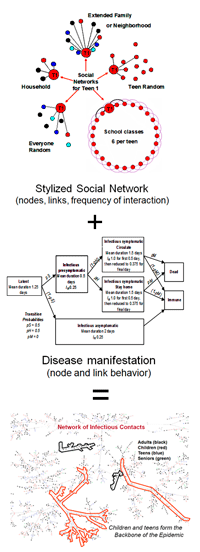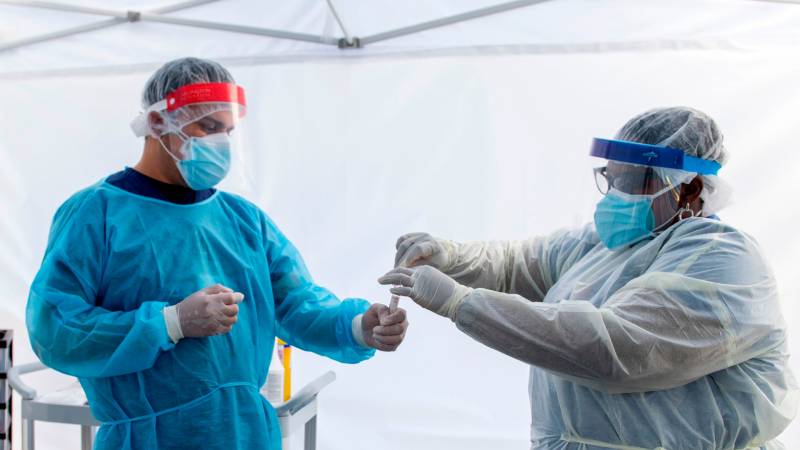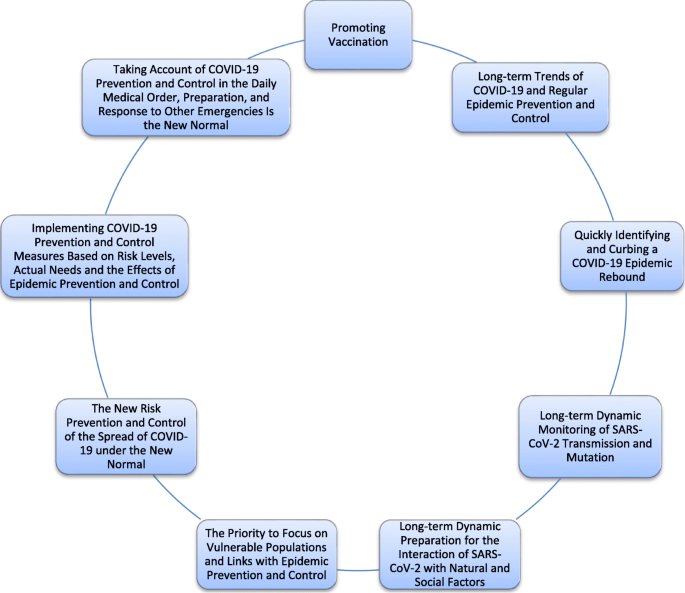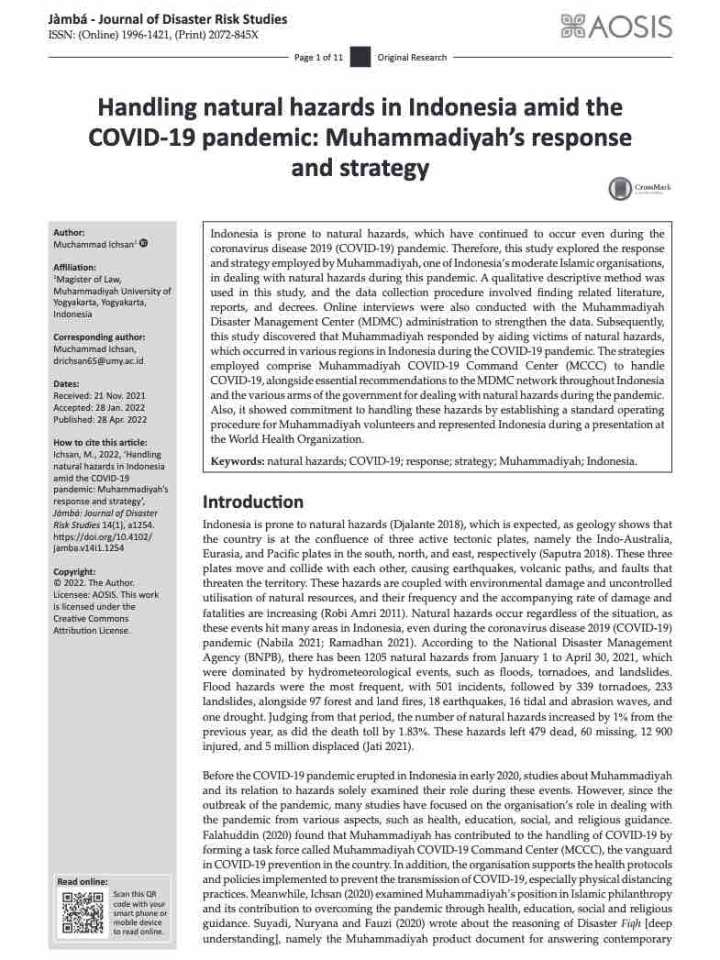Containment Mastery: Strategies for Pandemic Triumph

Introduction
In the battle against a pandemic, effective containment strategies are the linchpin for triumph. This article delves into the essential strategies employed to contain a pandemic, exploring the multifaceted approaches that contribute to curbing the spread of infectious diseases and safeguarding global health.
Early Detection and Surveillance
The foundation of pandemic containment lies in early detection and surveillance. Timely identification of potential outbreaks allows for swift response measures. Robust surveillance systems, monitoring symptoms and testing, enable health authorities to track and trace the virus, preventing its uncontrolled spread within communities.
Strategic Quarantine and Isolation Measures
Strategic quarantine and isolation measures play a pivotal role in limiting the transmission of infectious diseases. By isolating confirmed cases and implementing targeted quarantines for individuals at risk, authorities can break the chains of transmission and prevent widespread community outbreaks.
Mass Testing Initiatives
Mass testing initiatives are a key component of containment strategies. Implementing widespread testing allows for the identification of asymptomatic carriers and early intervention. By expanding testing capabilities and accessibility, health authorities can quickly identify and isolate individuals who may unknowingly spread the virus.
Effective Contact Tracing
Contact tracing is a meticulous process that involves identifying and notifying individuals who have been in close contact with confirmed cases. Leveraging technology, efficient contact tracing systems streamline the identification process, enabling rapid notification, testing, and isolation of potentially exposed individuals.
Stringent Travel Restrictions
In a globally connected world, travel can contribute significantly to the spread of infectious diseases. Implementing stringent travel restrictions, including border controls, quarantine protocols, and travel bans when necessary, is a crucial strategy to prevent the introduction and exportation of the virus across regions.
Public Health Education and Communication
Effective containment strategies rely on clear and consistent public health education and communication. Informing the public about the virus, preventive measures, and the importance of adherence to guidelines fosters a collective understanding. Transparent communication builds trust and encourages widespread compliance.
Vaccination Campaigns
Vaccination is a cornerstone in the long-term containment of a pandemic. Rapid and widespread vaccination campaigns contribute to achieving herd immunity, reducing the severity of illness, and preventing the uncontrolled spread of the virus. Vaccination efforts are integral to ending the pandemic and preventing future outbreaks.
Community Engagement and Cooperation
Containment strategies are most effective when communities actively engage and cooperate. Fostering community cooperation through outreach, education, and collaboration with local leaders builds a unified front against the virus. Communities that actively participate in containment efforts contribute significantly to overall success.
Adaptive Governance and Response
Adaptive governance and response are critical in the face of a rapidly evolving pandemic. Governments and health authorities must continuously assess the situation, adapt strategies based on emerging data, and deploy resources where they are most needed. An agile and responsive approach enhances the effectiveness of containment measures.
International Collaboration for Global Health
Pandemics transcend borders, necessitating international collaboration for global health security. Sharing information, resources, and expertise across nations strengthens the collective response to the pandemic. International cooperation is vital for developing and implementing containment strategies that address the interconnected nature of global health.
Conclusion with Link
In conclusion, pandemic containment strategies require a multifaceted and collaborative approach. For further insights into effective containment strategies and global health security, visit The Healthy Consumer website. Stay informed, stay vigilant, and contribute to the triumph over pandemics.
Effective Pandemic Testing: Protocols and Strategies

Effective Pandemic Testing: Protocols and Strategies
In the face of global health crises, the importance of robust Pandemic Testing Protocols cannot be overstated. This article explores the significance of effective testing strategies and protocols in mitigating the spread of infectious diseases.
The Foundation of Early Detection
Pandemic Testing Protocols form the foundation of early detection efforts. Swift identification of individuals carrying the virus is essential for preventing further transmission. Early detection allows for timely intervention, minimizing the impact of the pandemic on individuals and communities.
Strategic Testing Deployment
Strategic deployment of testing resources is a critical aspect of Pandemic Testing Protocols. Prioritizing testing in high-risk areas, among vulnerable populations, and at key points of potential transmission helps optimize resources and ensures that testing efforts have the greatest impact.
Variety of Testing Methods
Effective Pandemic Testing Protocols embrace a variety of testing methods. From PCR tests for accurate diagnosis to rapid antigen tests for quick results, a diverse range of testing modalities allows for flexibility and adaptability in different situations and settings.
Frequent and Mass Testing Initiatives
Frequent and mass testing initiatives play a pivotal role in Pandemic Testing Protocols. Regular testing, especially in high-contact environments such as workplaces and schools, helps identify asymptomatic carriers and prevent outbreaks before they escalate.
Contact Tracing Integration
Pandemic Testing Protocols are most effective when integrated with robust contact tracing efforts. Testing and contact tracing work hand in hand to identify and isolate infected individuals and trace potential exposure, creating a comprehensive strategy for containment.
Ensuring Accessibility and Equity
Equitable access to testing is a cornerstone of effective Pandemic Testing Protocols. Ensuring that testing is readily available to all, regardless of socioeconomic factors, promotes early detection and prevents the disproportionate impact of the virus on marginalized communities.
Clear Communication of Results
Communication of test results is a crucial component of Pandemic Testing Protocols. Clear and timely communication helps individuals understand their status, take appropriate precautions, and contribute to overall public health efforts in containing the spread of the virus.
Rapid Response to Emerging Variants
Pandemic Testing Protocols must include mechanisms for rapid response to emerging variants. Continuous monitoring and adaptation of testing strategies in response to new developments ensure that testing remains effective against evolving strains of the virus.
Public Awareness and Education
Public awareness and education play a vital role in the success of Pandemic Testing Protocols. Clear communication about the importance of testing, the availability of testing facilities, and the significance of individual responsibility contributes to increased testing uptake and adherence.
Integration with Vaccination Campaigns
Integration of Pandemic Testing Protocols with vaccination campaigns creates a comprehensive approach to public health. Testing remains crucial even as vaccination efforts progress, allowing for the identification of breakthrough infections and the monitoring of overall community health.
Visit The Healthy Consumer to explore comprehensive resources and support for understanding and participating in effective Pandemic Testing Protocols. Together, let’s build a resilient defense against the spread of infectious diseases.
Maximizing Safety: Essential Pandemic Prevention Measures for Health and Well-being

Introduction
In the ever-evolving landscape of global health, prioritizing pandemic prevention measures has become paramount. Implementing robust strategies not only safeguards individual well-being but also contributes to the broader community resilience. Let’s explore essential measures to prevent the spread of pandemics and foster a healthier, more secure future.
Understanding the Importance of Prevention
Effective pandemic prevention measures are crucial for minimizing the impact of infectious diseases on individuals and society at large. By understanding the significance of prevention, communities can proactively address potential threats and work towards creating a resilient and health-conscious environment.
Promoting Hygiene and Sanitation Practices
A cornerstone of pandemic prevention lies in promoting rigorous hygiene and sanitation practices. Encouraging regular handwashing, maintaining clean environments, and providing easy access to sanitization facilities contribute significantly to breaking the transmission chain of infectious agents.
Emphasizing Early Detection and Testing
Early detection is key to controlling the spread of infectious diseases. Implementing widespread testing initiatives allows for the timely identification of cases, enabling swift isolation and treatment. This approach not only protects individuals but also prevents further community transmission.
Encouraging Vaccination Programs
Vaccination remains a powerful tool in preventing the spread of infectious diseases. Encouraging and facilitating widespread vaccination programs is essential for achieving herd immunity, reducing the severity of illnesses, and ultimately preventing the escalation of pandemics.
Implementing Social Distancing Measures
Social distancing measures play a crucial role in preventing the rapid transmission of infectious agents. By maintaining physical distance in public spaces, workplaces, and social gatherings, individuals can significantly reduce the risk of exposure and limit the potential for widespread outbreaks.
Ensuring Adequate Healthcare Infrastructure
A robust healthcare infrastructure is vital for effective pandemic prevention. This includes ensuring an ample supply of medical resources, such as hospital beds, ventilators, and personal protective equipment (PPE). Adequate infrastructure empowers healthcare systems to handle potential surges in cases.
Fostering Public Awareness and Education
Preventing pandemics requires a well-informed and educated public. Fostering awareness about the importance of following preventive measures, understanding the signs of infectious diseases, and debunking misinformation can empower communities to actively participate in collective prevention efforts.
Implementing Travel Restrictions and Monitoring
Controlling the movement of people during potential outbreaks is a proactive measure in preventing the spread of infectious diseases. Implementing travel restrictions, monitoring border crossings, and regulating international travel contribute to containment efforts and protect global health.
Prioritizing Remote Work and Telecommuting
The adoption of remote work and telecommuting has proven effective in preventing the spread of contagious diseases. By prioritizing these flexible work arrangements, organizations contribute to social distancing efforts and help maintain business continuity during health crises.
Building International Collaboration
Pandemic prevention is a global effort that necessitates international collaboration. Sharing information, resources, and expertise across borders strengthens the collective response to potential outbreaks, fostering a united front against infectious diseases.
Conclusion with Link
In conclusion, effective pandemic prevention measures require a comprehensive and collaborative approach. By promoting hygiene, testing, vaccination, and other preventive strategies, communities can build a resilient defense against the threat of infectious diseases. For further insights into pandemic prevention measures, visit The Healthy Consumer website. Stay informed, stay safe.
Mitigating Pandemic Risks: Strategies for a Resilient Future

Mitigating Pandemic Risks: Strategies for a Resilient Future
The ongoing global pandemic has highlighted the critical need for effective risk mitigation strategies. In this article, we explore key approaches and measures to mitigate pandemic risks, ensuring a resilient and adaptive response to unprecedented challenges.
Understanding the Dynamics: The Evolving Nature of Pandemic Risks
Mitigating pandemic risks begins with a clear understanding of the dynamic nature of these risks. From the rapid spread of infectious diseases to the economic and social implications, a comprehensive grasp of the multifaceted challenges posed by a pandemic lays the foundation for effective risk mitigation strategies.
Early Detection and Surveillance: Nipping Risks in the Bud
Early detection is a linchpin in pandemic risk mitigation. Implementing robust surveillance systems allows for the early identification of potential outbreaks. Through monitoring indicators such as unusual patterns of illness or clusters of cases, authorities can intervene swiftly, preventing the escalation of risks.
Strategic Vaccine Deployment: A Pillar of Mitigation Efforts
Vaccination plays a pivotal role in mitigating pandemic risks. Developing and strategically deploying vaccines not only helps protect individuals but also contributes to the establishment of herd immunity. Prioritizing vaccine distribution based on risk factors and vulnerability enhances the overall effectiveness of mitigation efforts.
Global Collaboration: Uniting Against Common Threats
Mitigating pandemic risks necessitates global collaboration. Countries, organizations, and healthcare systems must unite against common threats. Sharing information, resources, and best practices on an international scale strengthens the collective ability to identify, respond to, and mitigate pandemic risks.
Public Health Measures: A Foundation for Risk Reduction
Implementing and sustaining public health measures form the bedrock of pandemic risk mitigation. These measures include widespread testing, contact tracing, quarantine protocols, and clear communication strategies. By prioritizing public health, authorities can curb the spread of the virus and mitigate associated risks.
Capacity Building in Healthcare Systems: Bolstering Resilience
A robust healthcare system is crucial for effective pandemic risk mitigation. Capacity building involves strengthening healthcare infrastructure, ensuring an adequate supply of medical resources, and training healthcare professionals. This proactive approach enhances a nation’s ability to handle surges in cases and reduces the strain on healthcare systems.
Resilient Supply Chains: Minimizing Disruptions
Mitigating pandemic risks extends to supply chain resilience. Diversifying suppliers, creating stockpiles of critical resources, and adopting agile supply chain strategies minimize disruptions. This resilience ensures the continuous flow of essential goods and services, even in the face of pandemic-induced challenges.
Digital Health Technologies: Enhancing Monitoring and Response
The integration of digital health technologies is instrumental in pandemic risk mitigation. Technologies such as telehealth, remote monitoring, and data analytics contribute to efficient monitoring and response. These innovations enable healthcare providers to reach and assist individuals, even in remote or isolated areas.
Community Engagement and Education: Empowering Individuals
Empowering individuals through community engagement and education is a proactive measure in pandemic risk mitigation. Educating the public about the importance of preventive measures, vaccination, and early symptom recognition fosters a sense of responsibility. Informed communities are better equipped to contribute to risk reduction efforts.
Accessing Pandemic Risk Mitigation: A Comprehensive Resource
For additional insights and resources on pandemic risk mitigation, consider exploring Pandemic Risk Mitigation. This centralized hub provides a wealth of information, practical tips, and support for individuals, communities, and organizations navigating the complexities of pandemic risks and mitigation strategies.
Strategic Responses: Navigating Pandemic Challenges

Crafting Effective Responses: Navigating Pandemic Challenges
The unprecedented challenges posed by a global pandemic demand strategic and adaptive responses. In navigating these complex scenarios, effective pandemic response strategies emerge as crucial tools for mitigating the impact, safeguarding communities, and fostering resilience.
Understanding the Dynamic Nature of Pandemics
The foundation of effective pandemic response lies in a comprehensive understanding of the dynamic nature of these global health crises. Recognizing that pandemics evolve, presenting different challenges at various stages, allows for the formulation of strategies that are agile, adaptive, and rooted in real-time data and insights.
Collaborative Governance and Interagency Coordination
A successful pandemic response requires collaborative governance and seamless interagency coordination. Governments, healthcare systems, and relevant agencies must work together cohesively. Establishing clear communication channels, sharing resources, and coordinating efforts ensure a unified response that is vital in managing the complexities of a pandemic.
Implementing Early Detection and Surveillance Systems
Early detection is paramount in controlling the spread of a pandemic. Implementing robust surveillance systems, both at local and global levels, facilitates early identification of outbreaks. Monitoring trends, analyzing data, and swiftly responding to emerging threats enable authorities to contain and manage the impact of the pandemic effectively.
Strategic Testing and Contact Tracing Initiatives
Strategic testing and contact tracing initiatives form the bedrock of a targeted response. Widespread and accessible testing, coupled with efficient contact tracing, allows for the identification and isolation of cases promptly. This strategic approach helps break the chains of transmission and prevents the exponential spread of the virus.
Healthcare System Preparedness and Capacity Building
Ensuring the preparedness and capacity of healthcare systems is a critical aspect of pandemic response. This involves strengthening healthcare infrastructure, securing adequate medical supplies, and enhancing the capacity of healthcare professionals. A robust healthcare system is essential for managing the influx of patients and providing quality care.
Communication and Public Awareness Campaigns
Transparent and timely communication is indispensable in a pandemic response. Implementing effective communication strategies and public awareness campaigns disseminate accurate information, dispel myths, and foster a sense of collective responsibility. Informed communities are more likely to adhere to preventive measures, contributing to the overall success of the response.
Balancing Social and Economic Impacts
Pandemic response strategies must strike a delicate balance between addressing the health crisis and mitigating social and economic impacts. Implementing measures to support individuals and businesses affected by the pandemic, such as financial aid packages, unemployment support, and targeted economic stimulus, contributes to a more holistic response.
Prioritizing Vulnerable Populations and Equity
An equitable pandemic response prioritizes the needs of vulnerable populations. This includes the elderly, individuals with underlying health conditions, and marginalized communities. Tailoring strategies to address the specific challenges faced by these groups ensures that the response is inclusive and leaves no one behind.
International Cooperation and Information Sharing
Pandemics transcend borders, underscoring the importance of international cooperation. Sharing information, expertise, and resources on a global scale enhances the collective response. Collaborative efforts among nations foster a sense of solidarity and enable a more effective and coordinated approach to managing and overcoming the pandemic.
To delve deeper into effective pandemic response strategies, visit Pandemic Response Strategies. As the world grapples with the challenges posed by global health crises, implementing thoughtful and strategic responses is imperative. By understanding the evolving nature of pandemics, fostering collaboration, and prioritizing the well-being of communities, nations can navigate these challenges with resilience and effectiveness.
Strategic Pandemic Containment: Effective Global Approaches

Strategic Pandemic Containment: Effective Global Approaches
In the ongoing battle against global health crises, understanding and implementing effective Pandemic Containment Strategies are paramount. This article delves into the multifaceted approaches that contribute to successfully containing pandemics on a global scale.
Early Detection and Surveillance
Pandemic Containment begins with early detection and robust surveillance systems. Identifying and monitoring potential outbreaks allow for swift responses, enabling authorities to implement containment measures before the situation escalates. Surveillance is a cornerstone in preventing the rapid spread of infectious diseases.
Strategic Testing and Contact Tracing
Strategic testing and contact tracing are integral components of Pandemic Containment Strategies. Widely available testing, combined with efficient contact tracing, helps identify and isolate infected individuals promptly. This proactive approach disrupts the chain of transmission and limits the spread of the virus.
Quarantine and Isolation Protocols
Implementing effective quarantine and isolation protocols is crucial in controlling the spread of a pandemic. By isolating infected individuals and quarantining those exposed, authorities can minimize the risk of widespread transmission. Clear guidelines and communication are essential for public adherence to these protocols.
Vaccination Campaigns and Immunization
A cornerstone in Pandemic Containment is widespread vaccination. Vaccination campaigns contribute to achieving population immunity, reducing the severity of illness, and preventing further spread. Ensuring equitable access to vaccines globally is essential for comprehensive and effective containment.
Public Health Education and Communication
Transparent and accessible communication is vital in Pandemic Containment. Public health education campaigns inform the public about the virus, preventive measures, and the importance of cooperation. Clear and consistent messaging fosters a sense of shared responsibility and encourages adherence to guidelines.
Global Cooperation and Data Sharing
Global cooperation is indispensable in Pandemic Containment. Countries and organizations must share information, resources, and expertise. Collaborative efforts enhance the collective response, allowing for a more unified approach to challenges such as vaccine distribution, research, and containment strategies.
Adaptive Policy Implementation
Flexibility in policy implementation is key in dynamic situations. Governments and health authorities must adapt Pandemic Containment Strategies based on evolving circumstances. This adaptability ensures that responses remain effective in addressing the unique challenges posed by each phase of a pandemic.
Community Engagement and Support
Pandemic Containment is more effective when communities actively participate. Engaging the public through community outreach programs, addressing concerns, and providing support fosters a sense of shared responsibility. Communities become active partners in the fight against the pandemic.
Technological Innovations in Containment
Technological innovations play a pivotal role in Pandemic Containment. From contact tracing apps to data analytics, technology enhances the efficiency of containment efforts. Embracing and continually improving these innovations contribute to more effective and data-driven strategies.
Continuous Monitoring and Adaptation
Pandemic Containment is an ongoing process that requires continuous monitoring and adaptation. Regular assessments of strategies, analysis of data, and a willingness to learn from experiences contribute to refining and strengthening containment efforts over time.
Visit The Healthy Consumer to explore comprehensive resources and support for understanding and participating in effective Pandemic Containment Strategies. Together, let’s build a resilient global defense against health crises.
Global Testing Hubs: Navigating the Pandemic Landscape

Setting the Stage: The Role of Global Pandemic Testing Centers
In the relentless battle against a global pandemic, the establishment of robust testing centers worldwide has become instrumental. These centers serve as pivotal hubs for early detection, strategic testing, and the formulation of effective public health responses, collectively contributing to global efforts in navigating the challenging landscape of infectious diseases.
Strategic Placement for Maximum Impact
The strategic placement of global pandemic testing centers is paramount. These centers are strategically located to ensure maximum coverage and accessibility, allowing for swift responses to emerging outbreaks. From urban areas to remote regions, the goal is to create a network that can quickly identify and contain the spread of infectious agents, regardless of geographical boundaries.
Early Detection: The Cornerstone of Effective Response
Global pandemic testing centers play a central role in early detection, acting as the cornerstone of an effective response. By offering accessible and widespread testing, these centers enable authorities to identify cases promptly. Early detection is crucial for implementing timely interventions, isolating individuals, and preventing the further spread of the infectious agent.
Diverse Testing Protocols for Varied Needs
The diversity of testing protocols implemented at global pandemic testing centers caters to varied needs. From PCR tests for accurate diagnosis to rapid antigen tests for quick results, the range of testing methods ensures flexibility in responding to different scenarios. Tailoring testing strategies to the specific characteristics of the infectious agent enhances the effectiveness of containment measures.
Accessibility and Inclusivity
Ensuring accessibility and inclusivity is a key aspect of global pandemic testing center initiatives. These centers are designed to be easily accessible to diverse populations, addressing geographical, economic, and social factors. Inclusivity in testing helps identify cases across all segments of society, preventing disparities in healthcare access and promoting a more equitable response.
Technology Integration for Efficiency
Global pandemic testing centers leverage technology for efficiency and accuracy. Automated testing processes, data management systems, and digital communication channels streamline operations. Technology integration enhances the speed of testing, reduces turnaround times for results, and facilitates real-time data sharing, contributing to a more responsive and interconnected global health network.
International Collaboration: Sharing Data and Resources
The essence of global pandemic testing centers lies in international collaboration. These centers function as hubs for the exchange of data, resources, and expertise on a global scale. Collaborative efforts strengthen the collective response, allowing nations to learn from each other’s experiences, share best practices, and harmonize strategies for effective pandemic management.
Training and Capacity Building
Global pandemic testing centers prioritize training and capacity building. Ensuring that healthcare professionals are well-equipped to conduct tests, interpret results, and adhere to safety protocols is crucial. Capacity building initiatives contribute to the proficiency of testing procedures, fostering a standardized and high-quality approach across different testing centers.
Surveillance and Monitoring for Emerging Threats
Beyond routine testing, global pandemic testing centers are instrumental in surveillance and monitoring for emerging threats. The continuous surveillance of infectious agents allows for the early detection of potential outbreaks and the swift implementation of containment measures. Vigilance is maintained to stay ahead of evolving pathogens and prevent widespread transmission.
Public Awareness and Trust-Building
Global pandemic testing centers actively engage in public awareness campaigns and trust-building initiatives. Transparent communication about the importance of testing, the confidentiality of data, and the role of testing in public health contributes to community understanding and cooperation. Building trust is essential for fostering widespread acceptance and participation in testing efforts.
To delve deeper into the role of global pandemic testing centers, visit Global Pandemic Testing Centers. As the world collectively faces the challenges posed by infectious diseases, the strategic placement, early detection capabilities, and collaborative nature of these testing centers become pivotal in the ongoing efforts to safeguard global health.
Containment Mastery: Effective Pandemic Measures

Crafting a Shield: Navigating Pandemic Containment Measures
In the face of global health crises, the efficacy of pandemic containment measures becomes paramount. These measures form a strategic shield against the spread of infectious diseases, requiring a comprehensive approach that encompasses early detection, swift response, and collaborative efforts on a global scale.
Early Detection: The First Line of Defense
The foundation of effective pandemic containment lies in early detection. Swift identification of potential outbreaks enables authorities to implement targeted measures to curb the spread. Early detection mechanisms, such as robust surveillance systems and widespread testing initiatives, form the frontline defense against the rapid transmission of infectious diseases.
Strategic Testing Protocols: Identifying and Isolating Cases
Strategic testing protocols play a pivotal role in pandemic containment. Standardized and widespread testing ensures the identification and isolation of cases, preventing further transmission. Implementing evidence-based testing strategies aligned with the nature of the infectious agent strengthens the overall containment effort and helps break the chains of transmission.
Contact Tracing Initiatives: Breaking Transmission Chains
Once cases are identified, contact tracing initiatives become instrumental in breaking the transmission chains. Swift and efficient contact tracing, supported by technology and collaborative efforts, enables authorities to isolate and provide care to those exposed. This targeted approach enhances the precision of containment measures, minimizing the impact on the broader population.
Quarantine and Isolation Measures: Restricting Spread
Quarantine and isolation measures form essential components of pandemic containment. By isolating confirmed cases and quarantining those potentially exposed, authorities can restrict the spread of the infectious agent. Strategic implementation of quarantine measures, guided by international health guidelines, helps protect vulnerable populations and prevents overwhelming healthcare systems.
Public Awareness and Communication: Fostering Compliance
Transparent communication and public awareness campaigns are critical elements in fostering compliance with containment measures. Clear and accessible communication about the importance of preventive measures, such as mask-wearing and social distancing, encourages widespread adherence. Public cooperation is essential for the success of containment strategies.
Cross-Border Collaboration: A Global Endeavor
Pandemics recognize no borders, emphasizing the need for cross-border collaboration. International cooperation in sharing information, resources, and expertise strengthens the global response. Collaborative efforts ensure a unified front against the spread of infectious diseases, fostering a sense of solidarity and resilience.
Vaccine Distribution: A Definitive Containment Strategy
As vaccines become available, their equitable distribution emerges as a definitive containment strategy. Vaccination campaigns, guided by international guidelines, aim to achieve widespread immunity, curbing the impact of the pandemic. Ensuring fair access to vaccines globally contributes to a more comprehensive and effective containment effort.
Adaptive Strategies for Variants: Staying Ahead
The dynamic nature of infectious agents requires adaptive strategies for containment. As variants emerge, authorities must stay ahead of the curve. Continuously monitoring and adapting containment measures to address new challenges is crucial for maintaining the effectiveness of the overall strategy.
Global Surveillance Networks: Vigilance Across Borders
Global surveillance networks play a pivotal role in maintaining vigilance across borders. Collaborative efforts in monitoring and sharing data on emerging threats contribute to early detection and containment. These networks are essential components of a proactive and interconnected global health system.
Continuous Evaluation and Improvement: Learning from Experience
Pandemic containment measures demand continuous evaluation and improvement. Learning from experience, analyzing the effectiveness of implemented strategies, and adjusting measures based on lessons learned contribute to a more resilient and adaptable response in the face of evolving health crises.
To explore more about pandemic containment measures, visit Pandemic Containment Measures. As the global community confronts the challenges of infectious diseases, the mastery of containment measures becomes a collective responsibility. By embracing early detection, strategic testing, and collaborative efforts, nations can navigate pandemics with resilience and safeguard the well-being of their populations.


(501).jpg)



